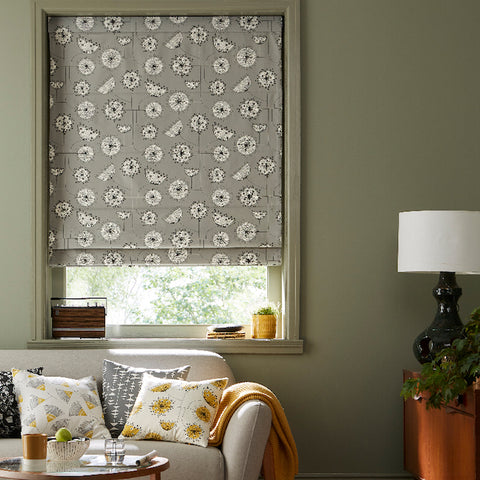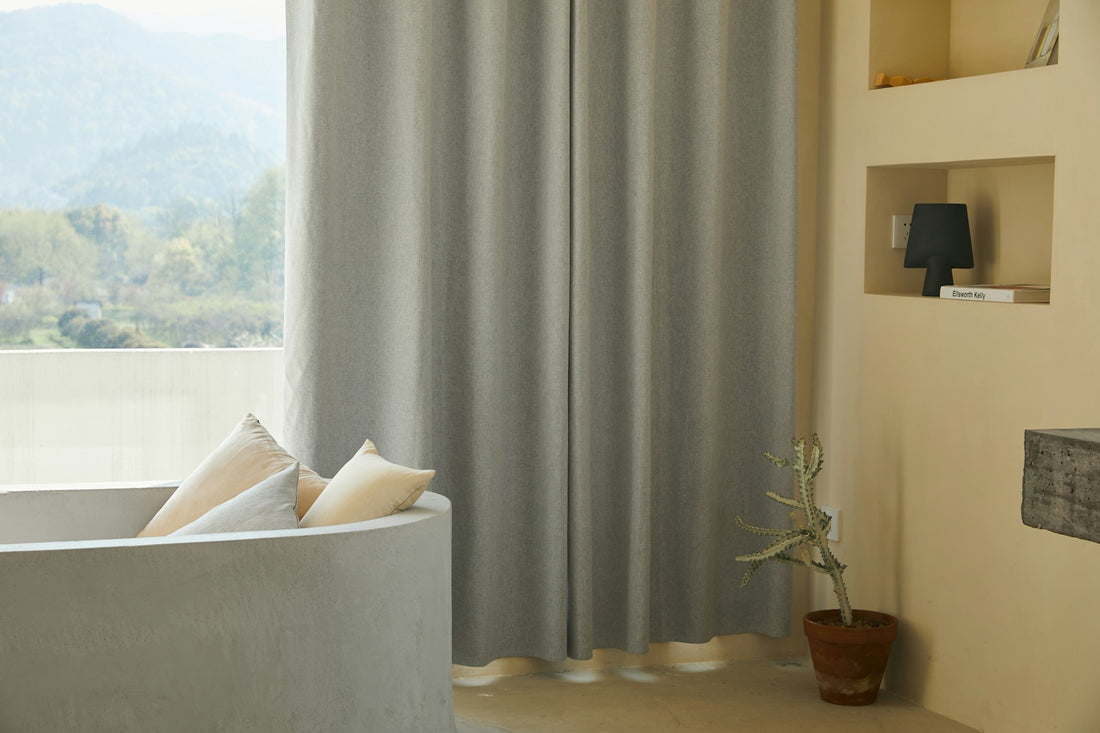Today, at Fabrics Galore, we explore the world of curtain and blind linings. This may seem like a small detail, but it's a crucial element that can significantly impact the overall look, feel, and functionality of your curtains or blinds. Lining isn't just about aesthetics (although a well-lined curtain hangs beautifully), it offers a treasure trove of functional benefits.
Whether you're a seasoned sewer or a beginner eager to learn, this guide to lining your curtains and blinds will provide you with all the knowledge you need to add that professional touch to your window hangings.
Why Line Your Curtains and Blinds?
First and foremost, let's talk about why lining your curtains and blinds is essential. Lining not only enhances the drape and appearance of your curtain or blind but also provides insulation, light control, and privacy. Moreover, it protects your main fabric from sun damage, extending the life of your window treatments.
Think of lining as the superhero cape for your beautiful curtain fabric. It offers these 5 key benefits:
-
Body and Structure: No more limp curtains. Lining adds weight and structure, creating beautiful cascading folds and ensuring your blinds hang uniformly.
-
Light Control: Depending on the lining type, you can block out harsh sunlight (perfect for bedrooms) or create a gentle light diffusion for a softer ambience.
-
Thermal Magic: Feeling the draft? Thermal linings act as an insulating barrier, keeping your home warm in winter and cool in summer, potentially reducing energy bills.
-
Fabric Protection: Linings safeguard your precious curtain fabric from sun damage, dust, and even minor spills, extending their lifespan significantly.
- Privacy: Sheer fabrics gain an extra layer of privacy with a lining, making them ideal for living areas.
Now, let's jump into the nitty gritty of lining your curtains and blinds.
Choosing the Right Lining Material
The choice of lining material depends on the main purpose of your curtain or blind. For light control and insulation, a blackout or thermal lining is ideal. If you're looking for a luxurious feel and improved drape, a cotton or polyester lining would be a perfect choice. For sheer or lace curtains, a lighter lining like voile or muslin can be used to maintain the delicate look while still providing privacy. Now that you're sold on the power of lining, let's explore the different types available.
-
This versatile option, often made from cotton or polyester blends, offers a good balance of weight, drape, and affordability. It's perfect for adding structure and light protection to most curtain fabrics.
-
Blackout Lining: Craving total darkness? Blackout linings, typically with a woven acrylic back coating, as well as a 3rd black layer in between this and the facing fabric, block out almost all light, making them ideal for bedrooms.
-
Thermal Lining: Featuring a special thermal backing, these linings help insulate your home, keeping you warm in winter and cool in summer.
-
Interlining: For an extra touch of luxury and insulation, consider interlining. This involves layering a thicker, fleece-like fabric between the lining and the main curtain fabric, creating a luxurious drape and enhanced thermal properties.
Pro Tip: When choosing your lining, consider the weight and drape of your main curtain fabric. For instance, a lightweight lining might not be enough for a heavy velvet curtain, while a bulky thermal lining could overwhelm a delicate sheer fabric.
Measuring and Cutting the Lining
Measure your curtain or blind, then add an allowance for the top and bottom hems. Generally, you should add 5cm (2 inches) for the top and 15cm (6 inches) for the bottom hem. Cut your lining fabric carefully according to these measurements.
Sewing the Lining to the Curtain or Blind: Technical Tips and Tricks
Ready to get sewing? Here are some handy tips to ensure your curtain and blind lining projects go smoothly:
-
Pre-wash your lining fabric: This helps to minimise shrinkage and prevent any surprises later.
-
Measure twice, cut once: Ensure your lining is the same size or slightly smaller than your main curtain or blind fabric.
-
Curtains: Lay the curtain face down on a flat surface. Place the lining on top, also face down, aligning the top edges. Sew along the top edge, then fold the lining over so that it's behind the curtain. Hem the sides and bottom, making sure the lining is slightly shorter than the curtain to prevent it from peeking out.
-
Curtain hems: Depending on your chosen heading style, you can either sew the lining to the top of the curtain first or enclose it within the hem allowance.
-
Blinds: For blinds, the process is slightly different. After cutting the lining to size, lay it face down on the blind fabric, also face down. Sew along the sides and bottom, leaving the top edge open. Turn the blind right side out, then sew along the top edge to close it.
-
Blind hems: For blinds, consider using a blind stitch to attach the lining to the back, creating a clean and invisible finish.
Adding the Finishing Touches

Once your lining is securely attached, it's time for the finishing touches. For curtains, this could mean adding pinch pleats or eyelets at the top. For blinds, you might want to add a pull cord or rod for easy operation. Read our series of blogs on how to make your own blinds for detailed advice.
The Final Curtain: A World of Creative Possibilities
We hope this guide has helped demystify the process of lining curtains and blinds. It may seem daunting at first, but with a bit of patience and practice, you'll be lining like a pro in no time. Then you can start to be really creative since lining isn't just about function; it opens doors to your creative expression. Here are some ideas to inspire you:
-
Play with contrasting colours: Use a vibrant lining fabric to peek through the bottom hem of your curtains for an element of surprise.
-
Pattern play: Choose a patterned lining to add a unique design element, visible from the outside when the curtains are drawn.
-
Coordinating trims: Use decorative trims like piping or fringes along the lining edge for a touch of elegance.
With a little planning and these handy tips, lining your curtains and blinds becomes a rewarding experience that elevates your window treatments from ordinary to extraordinary. So, unleash your inner sewing superhero and create beautiful, functional curtains and blinds that are sure to impress! You can always contact the friendly team in our fabric shop in London for any questions you may have too.


